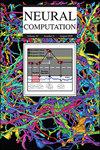快速记忆编码在海马峰电路模型中的应用。
IF 2.1
4区 计算机科学
Q3 COMPUTER SCIENCE, ARTIFICIAL INTELLIGENCE
引用次数: 0
摘要
记忆是大脑中一个复杂的过程,包括对先前经历的刺激进行编码、巩固和检索。大脑能够迅速形成感官输入的记忆。然而,将存储系统应用于现实世界的数据在实际实施中提出了挑战。本文表明,基于有界权和生物机制,通过整合稀疏脉冲模式编码方案王嘉硕、袁孟文、沈江荣、柴青高、唐华金、群体节奏和各种脉冲时间依赖的可塑性(STDP)学习规则,可以在海马结构启发的脉冲神经回路模型中快速形成外部感觉输入的稳定神经集合。该模型采用模拟海马齿状回(DG)区域模式分离机制的神经集成模块和竞争学习策略来实现非重叠稀疏编码。它还使用群体节奏和NMDA-(n -甲基- d -天冬氨酸)介导的STDP来构建联想和情景记忆,类似于CA3和CA1区域。这些记忆是通过在几次试验中形成的紧密连接的神经集合来表现的。总的来说,这个模型提供了一个强大的计算框架,以适应整个大脑记忆过程中的快速记忆。本文章由计算机程序翻译,如有差异,请以英文原文为准。
Rapid Memory Encoding in a Spiking Hippocampus Circuit Model
Memory is a complex process in the brain that involves the encoding, consolidation, and retrieval of previously experienced stimuli. The brain is capable of rapidly forming memories of sensory input. However, applying the memory system to real-world data poses challenges in practical implementation. This article demonstrates that through the integration of sparse spike pattern encoding scheme population tempotron, and various spike-timing-dependent plasticity (STDP) learning rules, supported by bounded weights and biological mechanisms, it is possible to rapidly form stable neural assemblies of external sensory inputs in a spiking neural circuit model inspired by the hippocampal structure. The model employs neural ensemble module and competitive learning strategies that mimic the pattern separation mechanism of the hippocampal dentate gyrus (DG) area to achieve nonoverlapping sparse coding. It also uses population tempotron and NMDA-(N-methyl-D-aspartate)mediated STDP to construct associative and episodic memories, analogous to the CA3 and CA1 regions. These memories are represented by strongly connected neural assemblies formed within just a few trials. Overall, this model offers a robust computational framework to accommodate rapid memory throughout the brain-wide memory process.
求助全文
通过发布文献求助,成功后即可免费获取论文全文。
去求助
来源期刊

Neural Computation
工程技术-计算机:人工智能
CiteScore
6.30
自引率
3.40%
发文量
83
审稿时长
3.0 months
期刊介绍:
Neural Computation is uniquely positioned at the crossroads between neuroscience and TMCS and welcomes the submission of original papers from all areas of TMCS, including: Advanced experimental design; Analysis of chemical sensor data; Connectomic reconstructions; Analysis of multielectrode and optical recordings; Genetic data for cell identity; Analysis of behavioral data; Multiscale models; Analysis of molecular mechanisms; Neuroinformatics; Analysis of brain imaging data; Neuromorphic engineering; Principles of neural coding, computation, circuit dynamics, and plasticity; Theories of brain function.
 求助内容:
求助内容: 应助结果提醒方式:
应助结果提醒方式:


